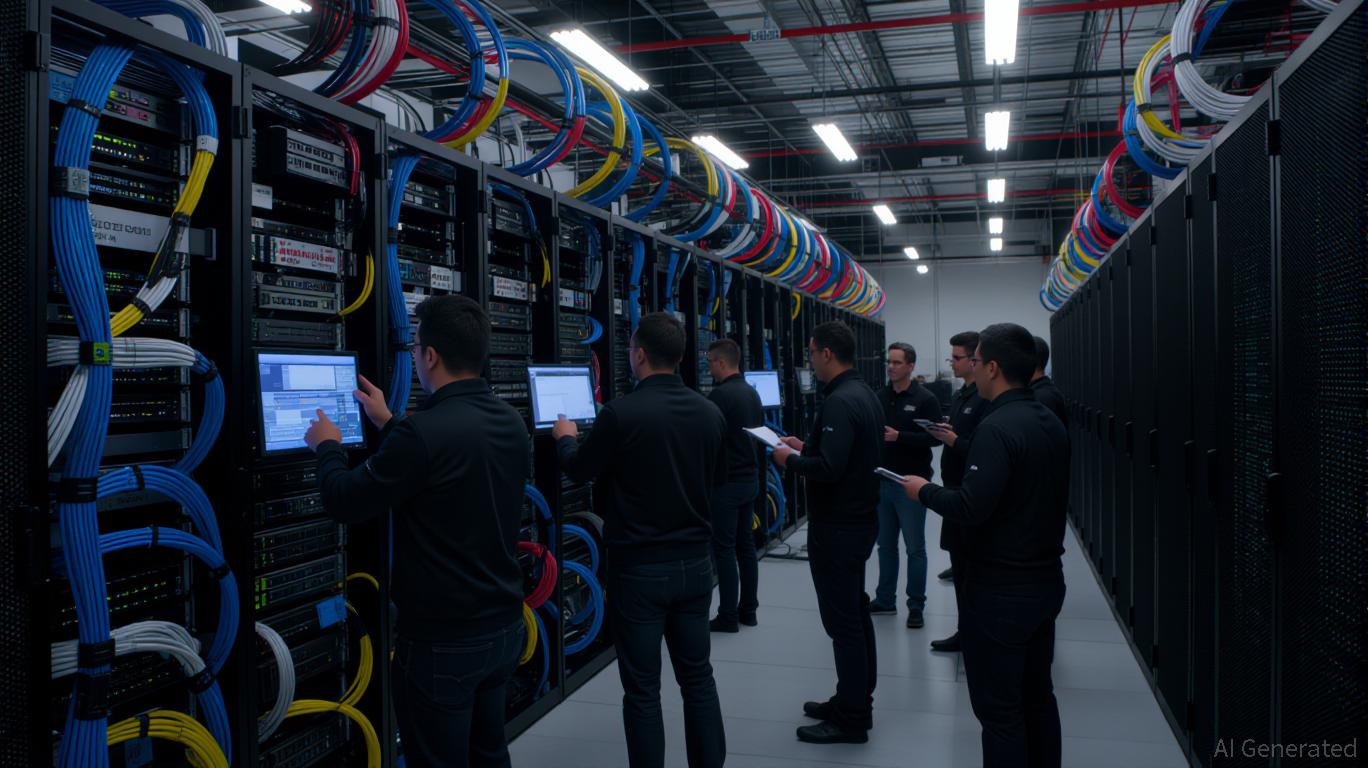AInvest Newsletter
Daily stocks & crypto headlines, free to your inbox
In the aftermath of the pandemic, the global technology landscape has undergone a seismic shift, with artificial intelligence (AI) emerging as the defining force of the decade. At the heart of this transformation lies a critical infrastructure bottleneck: the demand for semiconductors capable of powering the next generation of AI applications. Few companies are as well-positioned to capitalize on this shift as
(AVGO). Through a combination of strategic acquisitions, technological innovation, and a dual-engine business model, the company has secured a dominant role in the AI ecosystem. For investors, this represents a compelling case for long-term growth in an industry poised for sustained expansion.
Broadcom's ascent in the AI infrastructure space is anchored by its mastery of application-specific integrated circuits (ASICs) and high-speed networking solutions. The company's AI semiconductor division reported $4.4 billion in revenue in Q2 2025, a 46% year-over-year increase, driven by demand from hyperscale clients such as
, , and Google. These partnerships are not incidental but strategic: Broadcom's custom ASICs, tailored for AI inference and training, are designed to be irreplaceable for hyperscalers, who lack the internal capabilities to replicate such advanced silicon.The Tomahawk 6 switch, launched in June 2025, exemplifies this approach. With 102.4 terabits per second of switching capacity, it is engineered to support AI clusters with over one million XPUs (a term Broadcom uses for its custom accelerators). This innovation cements Broadcom's leadership in data center networking, a segment where it already holds a commanding market share. By championing open, standards-based Ethernet over proprietary alternatives, Broadcom has fostered a broad industry coalition, including switch makers like
and semiconductor rivals like and .Equally transformative is the company's integration of VMware, acquired in late 2023 for $69 billion. This move has created a seamless bridge between Broadcom's hardware and enterprise software, enabling end-to-end AI infrastructure solutions. VMware's private cloud platforms now serve as the backbone for secure, scalable AI environments, while Broadcom's Infrastructure Software segment has grown 25% year-over-year to $6.596 billion in Q2 2025. This dual-engine model—combining high-margin semiconductors with recurring software revenue—provides a durable competitive advantage.
The post-pandemic surge in AI adoption has ignited a global semiconductor renaissance. Chip sales are projected to reach $697 billion in 2025, with AI accelerators alone expected to surpass $150 billion this year. By 2030, the industry could hit $1 trillion in revenue, driven by generative AI's expansion into edge computing, enterprise on-premises infrastructure, and AI-enabled consumer devices.
Broadcom is uniquely positioned to capture a significant share of this growth. Its AI semiconductor revenue is forecasted to grow 60% year-over-year in 2025, reaching $19–$20 billion, with custom ASICs and networking solutions accounting for over 70% of the total. The company's 3.5D eXtreme Dimension System-in-Package (XDSiP) technology, which reduces power consumption and latency while enabling unprecedented interconnect density, is set to become a cornerstone of next-generation AI clusters. Analysts project that Broadcom's AI-related revenue could exceed $30 billion by 2026, driven by design wins with Alphabet, Meta, and ByteDance.
Broadcom's financials underscore its resilience and operational excellence. In Q2 2025, the company reported $15.004 billion in revenue, a 20% year-over-year increase, with an adjusted EBITDA margin of 67%—a testament to its cost discipline and pricing power. Free cash flow reached $6.411 billion, enabling a $7 billion shareholder return program, including $4.2 billion in stock buybacks. These metrics reflect a business that is not only growing but doing so with remarkable efficiency.
The VMware acquisition, while transformative, has been seamlessly integrated, with the Infrastructure Software segment now contributing 44% of total revenue. This diversification provides a stable cash flow stream, allowing Broadcom to reinvest in R&D (currently focused on 2nm 3.5D packaging and 10,000 teraflops XPUs) while maintaining a robust dividend.
Despite its strengths, Broadcom faces headwinds. The global semiconductor industry is grappling with a talent shortage, with a projected need for one million skilled workers by 2030. Geopolitical tensions, including U.S. export controls and trade conflicts, also pose risks to supply chains. However, Broadcom's strategic emphasis on “friendshoring” partnerships and its leadership in advanced packaging technologies mitigate these challenges. The company's financial flexibility further insulates it from volatility, with a debt-to-EBITDA ratio of 1.2x and a strong balance sheet.
For investors, Broadcom represents a rare confluence of technological leadership, financial strength, and strategic foresight. Its dominance in AI infrastructure—spanning custom silicon, high-speed networking, and enterprise software—positions it to benefit from the multi-decade AI revolution. While the semiconductor industry is cyclical, Broadcom's dual-engine model and recurring revenue streams from VMware provide a counterbalance to macroeconomic fluctuations.
The company's recent performance—77% year-over-year growth in AI-related revenue and a projected 60% increase in Q3 2025—underscores its ability to scale with the AI boom. As AI infrastructure spending accelerates, Broadcom is not merely a participant but a foundational architect. For long-term investors, the question is not whether to invest, but how to position for a future where AI dominance translates directly into market leadership.
In sum, Broadcom's strategic position in the AI ecosystem is a masterclass in leveraging structural trends. As the industry transitions from hype to hypergrowth, the company's combination of innovation, scale, and financial discipline offers a compelling case for sustained outperformance.
Daily stocks & crypto headlines, free to your inbox
Comments
No comments yet